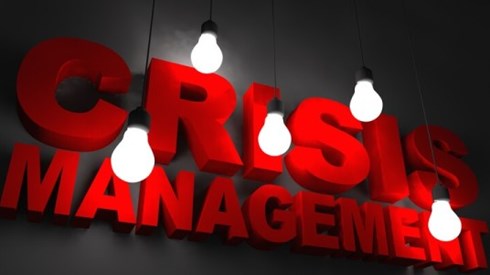COVID-19 and the Need To Think about Leadership and Crisis Management

John M. Foehl | March 23, 2020

As we self-quarantine and watch the 24/7 news coverage of COVID-19, it may seem like a strange time to be thinking about leadership. But a March 14, 2020, Wall Street Journal "The Captain Class" column caused us to pause and reflect. Written by Sam Walker, it is titled "COVID-19 Was a Leadership Test. It Came Back Negative."
The most interesting thing is, if you look at the URL for the online article, it reads, "great leaders are killjoys, nags, and neurotics until there is pandemic." In reading the story, it occurred to me that Mr. Walker's definition of leadership draws directly from the articles we have published on generative governance. Herein is a look at leadership and crisis management.
I would encourage everyone who reads this piece to also read the full article in the Wall Street Journal. It is a telling reminder that true leaders are few and far between. To quote Mr. Walker: "Leadership is what prevents a pandemic.... Great leaders are capable managers, too—the difference is how they approach the tranquil periods. No matter … how well things seem to be going, they continue to work relentlessly.... They peer around corners to anticipate the next unprecedented challenge, good or bad, and aren't afraid to push their teams to prepare for these extreme scenarios (italics added)."
One of my favorite quotes is, "The purpose of looking at the future is to disturb the present," by the noted French futurist Gaston Berger. I have argued in this column before that the number one job of the CEO and the board is to peer into the future. Unfortunately, most boards and CEOs fail to do so.
There are numerous reasons. One of my favorites is, "How can we predict the future? This is a futile exercise and a waste of time." Unfortunately, many leaders continue to think that generative thinking and scenario planning are trying to predict the future, when in fact, nothing could be further from the truth. Ask any futurist, and they will all concede they aren't so much trying to predict the future as to imagine various ways the future may play out. What we are really trying to accomplish is a series of war gaming exercises to learn important lessons before the crisis occurs. These lessons learned can then be employed if and when the scenario imagined actually begins to unfold.
Here is a concise recap of generative thinking for those who may wish they had been better prepared for what is currently unfolding.
The first step is to gather a diverse group of people. They may well all come from within the same company, but I would suggest you add at least one external voice. It is important that at least one individual is willing to challenge the narrative that exists in all organizations. Sometimes this can well be the CEO or the board chair, but, as Mr. Walker notes, they must be willing to be killjoys, nags, and neurotics. It may be easier for the CEO or the chair to allow an outsider to play that role.
Once the group is assembled, begin with a scanning exercise. The idea is to look at six different trends, as follows.
- Social trends
- Technology trends
- Environmental trends
- Economic trends
- Political trends
- Wildcard trends
An apropos analogy for a wildcard trend would be how zoonotic viruses—diseases that can be transmitted from animals to people—can jump to humans and what that might produce.
Ask each member of the group to think about each of these trends and make notes about how they could impact your organization. Once everyone is done, either the facilitator or the leader of the group should facilitate a table-wide discussion. The object of this debate is to sort the identified trends into an X/Y diagram. The X-axis on the diagram is impact on the company from minor to major. The Y-axis is the uncertainty of the event from highly certain, will happen to highly uncertain, could happen.
This grid then becomes the basis for building scenarios. Obviously, the grid will contain numerous trends and threats. But remember our leadership discussion—the objective here is to peer around the corner and think about extreme scenarios. So, trends that are certain to play out, whether of minor or major impact, can be left for managers to deal with. As Mr. Walker comments, "[M]anagers, as a species, operate at a lower order of difficulty. They operate best in situations where the threat is specific and the stakes are obvious to everyone."
Where crisis leadership evolves from is being able to produce ways to operate in the upper left-hand quadrant of the grid—major impact and high uncertainty. That is where you want to spend your time scenario planning. In generative thinking, the way to do this involves creating a story that is relevant, challenging, and plausible.
Here's where things get a little messy: one person's plausibility is another person's impossibility. That's where the outsider I mentioned before comes into play. The outsider's role is to provide pushback against the group if they all immediately agree the trend defies plausibility. The events we are seeking to identify can be considered black swans, grey rhinos, and white elephants. See my previous article.
The end product of this process should be a series of playbooks that provide guidance on how the company should react and prepare for one of these events.
So stay safe out there, and may we all get back to some normalcy in the not-too-distant future.
John M. Foehl | March 23, 2020
